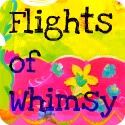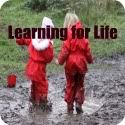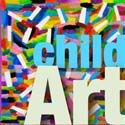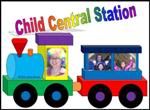Not so long ago in a Facebook forum, I offered my thoughts on what I believe to be the precarious tension that exists between the Australian ‘National Early Years Learning Framework’ (EYLF) and the ‘National Quality Standards’ (NQS). The NQS constitutes the assessment and rating instrument of the ‘National Quality Framework’ (NQF).
Here is a transcript of that Facebook post:
There is a niggling discord that exists for me when attempting to marry together the philosophical underpinnings of the EYLF and the NQF. To be fair, my concern is perhaps not the NQF so much as the accompanying NQS and A & R process. The EYLF is infused with ideals that embrace the celebration of diversity. It encourages educators/services to form respectful, collaborative partnerships with, and in, their community; responding to their local socio-cultural context. As a consequence of the introduction of the EYLF, we should be seeing the development of greater diversity in service provision as educators/services seek to meet the needs and aspirations of the families and children within their local context. The EYLF provides just enough ‘scaffolding’ to allow services to construct programs that reflect the uniqueness of their context. Unfortunately, what appears to have been given to us with one hand (the EYLF), was then swiftly taken away by another (the NQS). The EYLF assumes and/or credits EC educators with the capacity to create ‘quality’ programs for their local community whilst the NQS doubts their professional competency.
When we begin to participate in the discourse of ‘standards’ as prescribed by the NQS, we become ensnared in the bureaucratic act of chronicling ‘sameness’ and ‘uniformity’. The innovative art of tailoring programs to meet the needs of ‘the local context’ becomes subservient to measuring and comparing against standard criteria that honour homogeny. I am firmly of the belief that the NQS is falling far short of its intended goal! What represents ‘quality’ across multiple contexts can never be uniform in nature!
If I could wield my magic wand, I would pull the plug on the NQS and A & R process (the bath water) and gladly watch them gurgle down the drain while keeping a hold on the NQF (the baby). In essence, I would retain the ‘guiding’ framework but remove the process that fosters ‘standardisation’. Measuring and judging the work of professionals through a process representative of a ‘power over’ relationship (love a bit of Follett!) is not the way to improve quality. It only breeds anguish, frustration, antagonism and contempt.
But how do we ensure quality is achieved in services that are performing less than desirably? I would like to see the current ‘Assessors’ employed by our regulatory authorities replaced by ‘Pedagogical Consultants’ with qualifications, experience and longevity in the ECE field. They should be hands-on consultants (not bureaucrats!) who work collaboratively with services; investing in a ‘power with’ relationship to improve service quality.
“To lead people, walk behind them” ( Lao Tzu).
How has this frictional relationship become problematic for practice?
Since posting this opinion piece on Facebook, I have been contemplating the influence this proposed dissonance may have had on the courage and resilience of the early childhood profession. In particular, I am referring to those educators working at the coal-face and implementing the EYLF under the umbrella of what could be considered an imposing and conflicting NQS instrument. Based purely on a subjective appraisal of a variety of discussion forums on Facebook, I have certainly sensed that many educators are displaying a high degree of anxiety, confusion and uncertainty when attempting to weave both documents together in practice. For some educators, this appears to have triggered a palpable, fear-driven reluctance to’ trust’ in their own capacity to facilitate practice appropriate to their context. In essence, they are struggling to cognitively reconcile the relative freedom the EYLF offers them to create program formats and develop documentation processes that reflect their unique local context against the antithetical nature of a NQS that privileges uniformity. This tangible angst appears to have fuelled a growing misconception that a golden formula ‘must’ exist that defines the ‘right’ mode of practice, if only it could just be harnessed. Certainly, many educators seem to be desperately searching beyond themselves and their context for a ‘sure fix’ solution to reconcile their anguish. I believe the NQS has been particularly effective in bolstering this state of affairs.
When in doubt, clutch at straws?
Undeniably, this could hardly be considered the best response. However, personal observations would suggest that it is happening, and it is happening a lot.
It would be fair to acknowledge that for most people, experiencing a moderate level of anxiety, challenge or cognitive dissonance can be disturbing and uncomfortable. However, being open and receptive to these feelings provides the prerequisite ingredients to facilitate a capacity for critical reflection. Why? Because a degree of uncertainty leads to questioning, and questioning leads to growth; conversely, certainty leads to a closed mindset, and a closed mindset leads to stagnation. Although, a state of stagnation may have the potential to engender a calm and relaxed composure, little that could be considered positive or creative emanates from its languor. So the message here is to embrace uncertainty. Uncertainty is okay. Uncertainty is good for you. Uncertainty stimulates a growth mindset. Uncertainty fosters critical thinking. In fact, we really need to shout it out loud… UNCERTAINTY IS A GOOD THING!!!
The beauty of embracing uncertainty is that it may just liberate educators from feeling the need to clutch at straws or seek out sham ‘quick-fix’ solutions or ‘time-saving’ templates. It has become a concern to many within the profession that there is an ever increasing emergence of unqualified and inexperienced individuals seeking to prey on the vulnerability of educators within the early childhood field. These swindlers aim to exchange shoddy templates and largely plagiarised materials to line their own pockets with educators meagre, but hard earned money. The advent of social media, particularly Facebook, and the ease with which these unscrupulous individuals can now create ‘professional-looking’ websites and glossy templates has certainly helped them market their inferior product. Their efforts represent a disgraceful exercise in deception, and are a conduit that educators should seek to avoid. The best available support options for educators have always been, and remain, seeking out trusted and experienced mentors for sponsorship and guidance, and pursuing professional development opportunities from highly qualified, reputable and respected consultants within the field.
It is a given, and in fact mandatory under the NQF, that educators commit themselves to an ongoing cycle of pedagogical growth through the linking together of performance appraisal and professional development requirements. Why? Because embracing the art of Pedagogy is an enduring relationship that necessitates embarking on a voyage of continual discovery; one that extends far beyond the finality of a graduation ceremony. Importantly, amidst that journey, a treasure-trove of experiences and encounters can be unearthed and connected to advance an educator toward an elevated wellspring of cognisance. The voyage harbours the potential to deliver those delectable and inspirational ‘Ah-ha!’ moments. When an educator engages in an ongoing cycle of performance appraisal and professional development, they are encouraged to think critically and make explicit the areas of practice within which they personally need to secure a broader, more detailed knowledge and understanding. Without doubt, it is an intellectually stimulating process, often arduous and challenging, but definitely one that can never be ‘fast-tracked’.
And now for a final word on the NQS.
Having read this far, readers would no doubt acknowledge that I am not particularly enamoured with the NQS. So to ensure transparency, it is probably prudent that I declare that this viewpoint is not in any way a response to a negative experience with the assessment and rating process or the NQS. I am the Director of a service that was assessed and rated not long after the NQS were initiated in 2012. All-in-all, the experience was quite short lived (one and a half days) but not particularly conducive to accurately appraising the unique qualities of the service. The assessor was moderately pleasant and measured in her interactions, but simultaneously tenacious in checking the required ‘boxes’. Ultimately, we received an ‘Exceeding’ rating. For a short while we were somewhat buoyed by the outcome, but at the same time, there remained a niggling disquiet about the process.
When we initially received and started to scrutinise our draft assessment feedback, we were struck by the subjective nature of the transactions that permeated the application of the NQS instrument. In addition, we were perplexed by the vague ‘semantics’ involved in distinguishing between what constituted ‘meeting’ and ‘exceeding’ the NQS with regard to many elements. Stunned and floored, it became disturbingly evident that the difference between receiving a ‘meeting’ or ‘exceeding’ rating on an element could be centred upon the mere presence or absence of one word!!! ONE WORD!!! Given that the insertion of that ‘one word’ was at the subjective discretion of one individual, the process simply seemed to amount to absurdity!!! Deep disillusionment resulted in the service providing our Regulatory Authority (RA) with a detailed feedback report specifying the concerns we held with regard to the A&R process; specifically our misgivings surrounding the nature and application of the A&R instrument.
Three years have now transpired since our A&R experience and today I find myself absorbed in an article that was published in the Australasian Journal of Early Childhood called, ‘Constructs of quality in early childhood education and care: A close examination of the NQS assessment and rating instrument’ [40(3) 2015]. Jen Jackson from Victoria University is the author of the article, and her previous experience includes the role of Lead Assessor in Victoria. Unsurprisingly, Jen’s analysis alludes to and substantiates many of the reservations our team had exposed back at the time of our assessment.
Within the article, Jackson makes the following judicious observations:
”In summary, the assessment and rating process involves two points at which the assessors must exercise professional judgement: in determining if an element is ’Met’ or ‘Not Met’, and then determining whether a standard is Meeting NQS or Exceeding NQS (if all the constituent elements are ‘Met’). Due to the procedural rules that govern ratings at the quality area and service levels, these decisions have significant consequences for the overall outcome of the assessment and rating process for the service. The integrity of the process therefore depends upon these measurements being consistent and defensible” (p.47).
“Consistency across assessors, or inter-rater reliability’, is a significant concern, as the levels of subjectivity involved in observation systems makes them ‘particularly subject to error’ (Sandilos & DiPerna, 2011, p.69)” (p.47).
“Consultations from the 2014 national review of the assessment and rating process suggest that the combined strategies of inter-rater reliability supports and text-based tools have still left room for improvement in the reliability and validity of NQS assessments (Woolcott Research and Engagement, 2014)” (p.50).
Mmmmm…. So what do you think? Is NOW a good time to pull the plug on the NQS and A & R process?


















Yes and yes! With the EYLF and NQF you create a structure that works for your setting and for that a guide is very helpful. When my centre did A&R recently the process feels like judging, but in some ways the report was a helpful overview of our centre as a whole. It would have then been nice to have the assessor as a guide to improve areas that need work – rather than the assessor saying ‘that’s not good enough’ and walk away.
I couldn’t agree more. This is something I covered a bit of in my thesis- this fear-driven desire to “get it right” and how many consultants and products are capitalising on this desire/need/anxiety for ‘exceeding’ to sell their wares. This is the link, should you be interested 🙂
https://minerva-access.unimelb.edu.au/handle/11343/40979
Thank you Rebecca. I will look forward to reading the link. 🙂
Kind regards
Karen
Thank you Karen for so clearly and positively outlining the differences between the hope of the NQS and the reality of the assessment process.